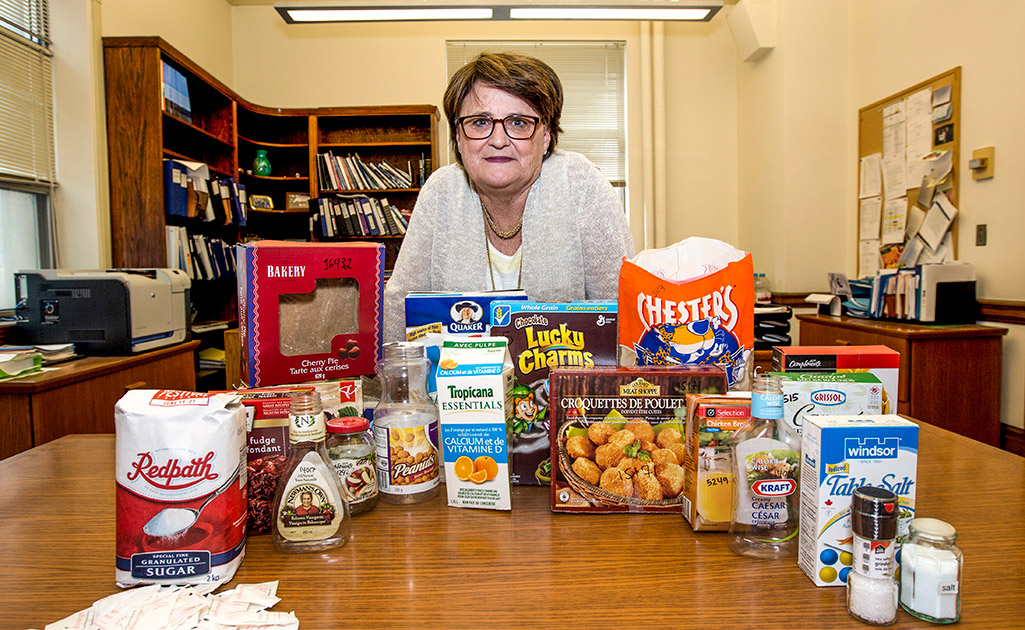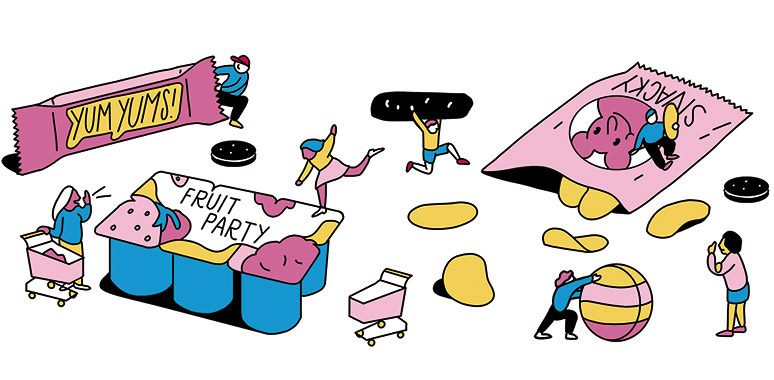Prof. Mary L’Abbé conducts research into the nutritional quality of packaged and restaurant foods. One of her interests is food marketing to children – work funded by U of T’s Joannah and Brian Lawson Centre for Child Nutrition. She talks to deputy editor Stacey Gibson about the disturbing consequences of marketing unhealthy fare to kids.

Tell us about your research into food marketing to children.
For one study, we looked at the amount of sodium, sugar and saturated fat in more than 20,000 food and beverage products. We found that only 16 per cent met Health Canada’s proposed thresholds for marketing to kids. Our research has also shown that foods that are most heavily marketed to children are often the less healthy option.
We want more of the onus to be put on the system rather than the individual to find the healthiest food. A parent goes into a grocery store with two children in tow and, with limited time, tries to pick out the healthiest foods while being bombarded by advertisements. It’s a hard job, and we want to help minimize the struggle.
Why is it so important to get a handle on this type of marketing?
Children are the most vulnerable in our society. The food habits that children learn early in life are the habits they tend to follow for the rest of their lives.
Compared to a generation ago, a lot more children today are obese. Because of poor eating habits, we’re also seeing more cases of high blood pressure and elevated blood lipids and glucose levels in adolescents and young adults. These are risk factors for diseases such as stroke, heart disease and diabetes – which don’t usually appear until middle age. I think that’s a real wake-up call.
We need to start preventing disease in childhood rather than treating disease in adults. To do this, we need to start healthy eating habits in the home so that our children grow up to be healthy adults, as opposed to treating them with all kinds of drugs as adults to keep their blood cholesterol, glucose and hypertension levels normal. Restricting companies from marketing unhealthy foods to children is a start.
Your research has helped support the Child Health Protection Act, which is awaiting final approval in the Senate. Why is this bill important?
The bill proposes to prevent companies from marketing foods that exceed the Health Canada thresholds for high levels of sodium or sugar or saturated fat to children under the age of 13.
This works two ways. It reduces the amount of marketing that children and parents are exposed to, and it also works as an incentive to the food industry to reformulate foods. We saw that happen with trans fats: virtually every company has reformulated their foods to get below the regulations.
Are there certain kinds of foods that are marketed to children more aggressively than others?
Breakfast cereal is one of them. There’ll be half a dozen things on the box clearly setting them up to appeal to children – games on the back, cartoon characters, the colour of the cereal, the colour of the boxes. Yogurt and cookies are two other examples.
How can parents help ensure their kids choose healthy foods?
Children are dependent on the adults in their environment to help shape their eating habits. School food policies, parent councils at school and eating well in the home really do help children. We hope by the time they’re making their own choices, they’ve learned how to eat healthily.

Joannah and Brian Lawson donated $10 million to create the Centre for Child Nutrition at U of T’s Faculty of Medicine. Established in 2017, the centre connects researchers, health practitioners and patients to improve the nutrition of children and reduce childhood obesity, malnutrition and chronic disease.







No Responses to “ The Ads That Kids Shouldn’t See ”
I certainly agree with the points brought forward in the article. What I think is just as important, if not more important, is that children spend far too much time watching TV or using their devices instead of being active. A sedentary lifestyle as a child sets that child up to be a sedentary adult. We don't need yet another study to determine that people need to move their bodies in order to be as healthy as they can be! Healthy food and exercise equals a better quality of life!
Bravo! What would seem to be common sense is no longer apparent to many while the bad food options seem to outweigh the sensible ones on the grocery shelves. As with single-use plastics and all the other horrors of our time, we need to tell the people who supply these products that we won't buy them anymore! So educating people about what is not a healthy option is a very good place to start. We are all too trusting that someone is watching out for our best interests. No one is!
As a PHE graduate from U of T, I agree with LM's comment. I believe that regular physical activity is the most important factor in determining a healthy life. Dr. S. Blair's research out of The Cooper Institute in Dallas provides excellent data to support this claim. I would also suggest that instilling an active life in children results in their ability to make healthy lifestyle choices independently, and negates the need for regulation that limits choices or tells citizens what they should or should not eat. That would be an interesting study for the Joannah and Brian Lawson Centre for Child Nutrition to support.
I am really in support of you since I am a pediatrics and child health expert.
From Shirley Grant (TESL 1986 Woodsworth)
In response to commenter LM, I would heartily recommend that families in Ontario with children join the Bruce Trail Conservancy. It's truly wonderful organization.